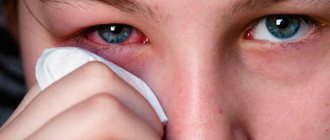Many parents ask what to do if their child has a large mantou. Vaccination against tuberculosis is given to babies in the maternity hospital so that the newborn’s body becomes familiar with Koch’s bacillus and begins to produce bodies - T-lymphocytes. This will help create the necessary protection against dangerous infections.
Let's look at why this vaccination is done. The Mantoux vaccine is aimed at detecting T-lymphocytes in children that can recognize Mycobacterium tuberculosis. When assessing mantoux, the doctor looks at the size of the button, the size of the scar that remains after the injection, takes into account the timing of the last vaccination, data from previous mantoux samples. If the manta is large, we will consider what this means below.
Big size
The concept of a large manta ray is a relative phenomenon. Here it is necessary to take into account whether there were any contraindications before it was carried out, what the age of the baby is, how much time has passed since the BCG vaccination.
If parents believe that the child is one year old and has a large mantu on the arm, then it is likely that this size is the norm. The fact is that 12 months after BCG, the size of the “button” can be 10 mm. For a five-year-old toddler this would be a bad result, while for a one-year-old it would be the absolute norm.
In fact, experts begin to talk about a large manta ray if, at the time of checking the results, the size of the “button” is more than 17 mm. This indicator is called hyperergic and it can indeed be evidence of infection. Also, the fact that infection has occurred may be indicated by a sharp jump compared to last year’s figure, an increase in the size of the “button” by more than 6 mm.
There is such a thing as hyperemia. Looking at your little one's hand, you will see a huge reddish spot, maybe more than 18 mm. However, the “button” itself will be much smaller. This condition will not indicate the presence of tuberculosis.
A high result of the mantoux test is not one hundred percent evidence of infection of the body with Koch's bacillus. This can be said in cases where there is an annual increase in this indicator, instead of decreasing or a sharp jump. But even at the same time, one cannot immediately judge the presence of tuberculosis. First you need to undergo additional research.
You will be referred to a TB specialist for consultation in cases where the following factors exist:
- the reaction to manta is a “turn”;
- there is a stable annual increase in the sample rate for several years in a row;
- The child is diagnosed with a large button size.
If a toddler's mantoux has become very large, it is necessary that all family members be examined.
How to perform a mantoux test in adults
The mantoux test is performed in adults much less frequently than in children and adolescents, but the technique is standard for everyone. The technology for carrying it out is as follows: below the elbow bend of the left arm of an adult, a substance made from the culture of tuberculosis bacteria PPD-L is injected into the skin in an amount of 2 TU (tuberculin units), which is 0.1 mg of solution. In general, there are several types of tuberculin, but in Russia, standard purified tuberculin in 2 ml ampoules is most often used. The substance is absolutely harmless, does not contain a live culture and does not cause infection. The procedure is carried out with a disposable sterile insulin syringe with a very thin needle that painlessly penetrates the skin layer (in no case intramuscularly or subcutaneously). After the injection, the syringe is disinfected and subsequently disposed of.
The test result is recorded three days after the tuberculin injection. For three days, the person where the substance was injected should not get wet, scratched, covered with an adhesive bandage or treated with antiseptics, so as not to distort the readings of the tuberculosis test.
The timing of the tuberculin test is planned in such a way that a month before the test the person does not receive any vaccinations, otherwise the results of the study may not be reliable due to individual characteristics and the body’s reactions to the vaccinations.
Particular attention is paid to the date of the last BCG vaccination
Causes
Eating foods that cause allergic reactions immediately after testing can lead to a large enlargement of the mantou or its redness.
Why can the mantou be large? This is influenced by a number of factors:
- the child has contraindications to this procedure;
- an allergic reaction, especially if the drug contained impurities;
- the presence of a parasitic infection in the body;
- low-quality drug;
- recent vaccinations;
- non-compliance with diet rules, consumption of foods that provoke allergies or contact with allergens of a different nature;
- the injection site was wet or scratched;
- One to three years have passed since the BCG vaccination.
Adverse reaction
Runny nose - a possible adverse reaction
An increase in size may indicate a side effect. In such cases, in addition to this symptom, the following may also be observed:
- temperature rise;
- lethargy, apathy;
- the appearance of a skin rash;
- problems with the digestive system;
- cough;
- runny nose.
General information
The Mantoux test (Mantoux test, tuberculin test) is a procedure performed to assess the body’s response to tuberculosis pathogens.
The patient is injected with tuberculin, a drug containing an antigen obtained as a result of deep processing of mycobacteria, which is unable to either infect a person or instill immunity. That is, such a procedure is not a vaccination in the usual sense, it is just a method for diagnosing the disease.
This test is carried out annually for children from one year to 14 years of age (in case of an increased risk of the disease - up to 18 years of age), as well as for some categories of the adult population. Thus, this diagnosis is mandatory for people in contact with tuberculosis patients (living with such patients or doctors) and for people working with children.
Tuberculin is injected subcutaneously into the forearm area, from the inside. The right and left hands alternate with each insertion. The procedure is carried out in a clinic at the place of residence, and for kindergarten pupils and school students, a tuberculin test is performed directly at the educational institution.
Three days after administration of the drug, or more precisely 72 hours later, a medical professional examines the injection area and evaluates the reaction: the general condition, the presence or absence of redness, induration, swelling is taken into account, and also determines the size of the resulting papule (a small dense tumor formed at the injection site ). Its measurement is carried out with a transparent ruler across the arm. The data is entered into the medical record.
The resulting reaction is interpreted as:
- negative;
- doubtful;
- positive;
- false positive.
It should be remembered that any reaction, no matter in what form it appears, cannot clearly indicate infection with tuberculosis. A positive reaction only serves as a reason to prescribe an additional examination by a phthisiatrician.
Reliability of results
Hemodialysis may affect the reliability of the result
You should be aware that tuberculin may contain some impurities that can cause a non-standard reaction of the child’s body to the administered drug.
You need to know that the correct performance of the test is influenced by the presence of the following conditions:
- hemodialysis;
- immunodeficiency;
- chemotherapy.
You should know that absolute contraindications are:
- the presence of skin diseases;
- history of epilepsy in the child;
- severe allergies.
A sample may be unreliable if:
- the child is quarantined in the team (presence of infection);
- the preparation for the mantoux test was stored in improper conditions or has expired;
- a low-quality instrument was used during the procedure;
- the drug was administered incorrectly;
- the sample result was incorrectly assessed.
Possible side effects
In most cases, after the administration of tuberculin, a person does not experience any discomfort. But sometimes this procedure can be accompanied by unpleasant symptoms: swelling after Mantoux can be accompanied by redness and itching of the skin, and pain occurs when you press on the injection site.
There may be several reasons for the development of such consequences:
- A severe allergic reaction to the drug or individual intolerance to it, possibly an increase in body temperature.
- When performing the Mantoux test, no contraindications are taken into account. Perhaps this effect occurred as a result of the presence of some kind of infection in the body, or not enough time has passed after recovery.
- The injection site was scratched, resulting in infection in the wound.
Most often, such negative symptoms appear in young children, since it is most difficult to convince them not to touch the “button” and to keep track of it. If a child’s Mantoux is very swollen, it is likely that the injection site was not sufficiently protected, and the baby, scratching the “button,” caused such a reaction.
Visually, Mantoux resembles an insect bite mark, so the child has a natural desire to touch and scratch this place. The easiest way to protect your baby from this temptation is to hide the injection site under clothes with loose long sleeves.
This way the “button” will not attract the child’s attention, and at the same time it will be protected from excessive pressure and friction.
You need to remember that you should not bandage, treat with iodine or brilliant green if the Mantoux is swollen! Such manipulations will not bring relief, but they can spoil the picture of the reaction, which will complicate its further correct assessment by a TB doctor.
The mantoux may become red and very swollen due to an allergic reaction; in this case, antihistamines will help reduce itching and swelling. If a child is susceptible to allergies, it is recommended to take such medications a couple of days before Mantoux and for three days after (before evaluating the results).
If the above symptoms persist for three days (before the sample is examined by a health worker), the patient is sent for further examination to a phthisiatrician.
However, if such symptoms become pronounced, cause severe discomfort, and your hand hurts when you press Mantoux, then there is no need to self-medicate and look for answers on the Internet, trying to establish a “diagnosis from a photo”; in this case, you should consult a doctor without waiting for the date appointed to evaluate the reaction.
Additional symptoms
In addition to a positive mantoux test, the following signs may indicate the presence of possible tuberculosis:
- the papule has a bright red color;
- the “button” has clear outlines;
- a week after performing the mantu, the mark does not disappear, but becomes brown;
- the formation of bubbles, and having different sizes;
- the appearance of necrotic changes;
- development of a red track in the direction from the injection site to the elbow.
Necessary examinations
What to do if the manta ray is really large? If the health worker confirms that the result is higher than normal, you will be referred to an appointment with a phthisiatrician. This specialist will first get acquainted with your child’s medical history and the presence of chronic illnesses. Before saying that the baby is infected, the specialist will refer you to the following studies:
- general blood analysis;
- biochemistry if necessary;
- sputum examination;
- X-rays of light;
- Pirquet test - scarification of the shoulder is carried out with the application of a tuberculin solution (100%, 25%, 5% and 1%);
- enzyme immunoassay for the presence of antibodies;
- serological tests to identify specific immunoglobulins;
- polymerase chain reaction - allows you to detect extrapulmonary forms of tuberculosis.
The doctor will also ask you to provide a fluorogram of the baby’s parents.
Now you know for what reasons a child may have a large mantu. Remember that you do not need to evaluate the result until 72 hours after the procedure. We should not forget that the large size of the manta is not always evidence of tuberculosis. Remember also about the need to properly care for the injection site, make sure that the baby does not scratch it.
What to do if a child scratches Mantu?
Children often scratch the injection site, even if they do not feel itching. The fact is that the button is always noticeable on the skin; it vaguely resembles a mosquito bite. What to do if the Mantoux vaccine itches? The child has a completely normal desire to touch this place, scratch it. As a rule, in such cases nothing bad happens.
But if, after careless touching, the button becomes very swollen and enlarged, it is necessary to deal with it. After all, a large papule will be perceived by the doctor as a positive reaction, and the child will have to undergo additional examinations.
Photo 3. A swollen button, reminiscent of a mosquito bite, that a child scratched may raise suspicion that the reaction is positive.
If a child scratches the Mantoux test and it increases in size, the algorithm of actions is as follows:
- Give your child an antiallergic drug. There is a possibility that he is allergic to tuberculin, so a preventative pill would not hurt.
- Give also an antihistamine. It is better to do this not immediately, but several hours after the antiallergic drug, so that they do not interfere with each other’s work.
- Instruct your child not to scratch the injection site again, and explain the possible consequences. If you convince your child that if the button is large and red, the doctor will force him to give him a few more injections, then the desire to scratch something will disappear by itself.
- If the house is not very hot, dress your child in a sweater or long-sleeved shirt. If he does not see the injection site, then the desire to scratch it will disappear faster.
Important! Bandaging the injection site with a bandage, applying peroxide and cream, and applying ice is not a good idea. Close contact with the fabric will cause the scratched papule to itch even more.
The best choice is clothing with long and loose sleeves.











